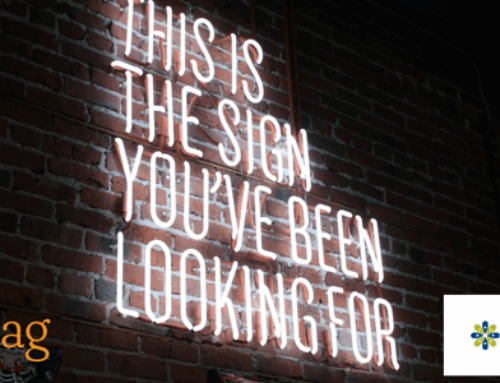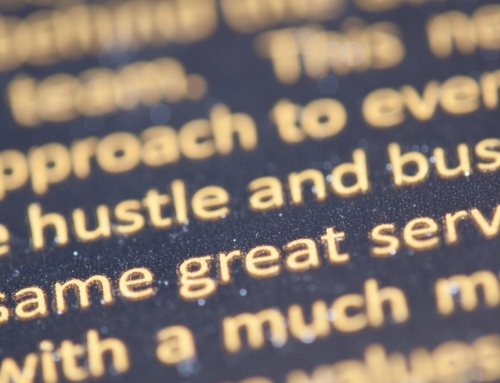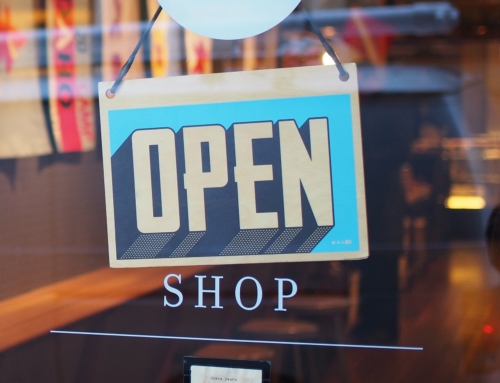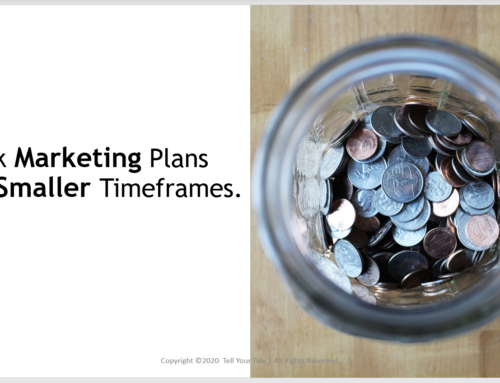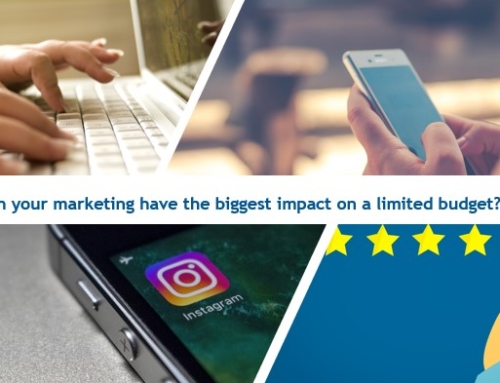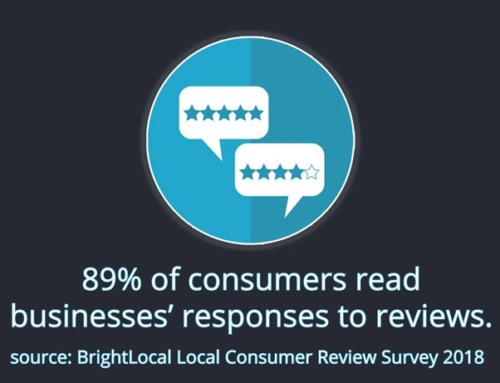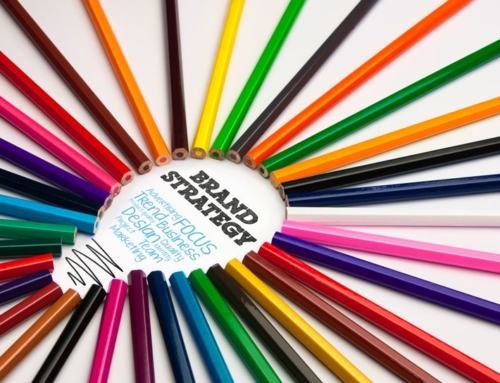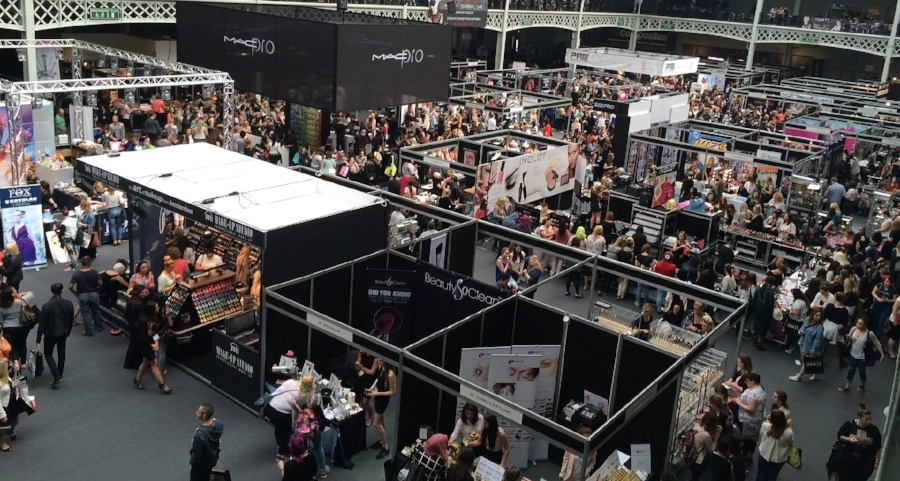
Strategic Trade Show Planning Ensures Strong ROI
Trade shows can be a hit or miss depending on your preparedness, so it is important that you start planning early. To give you a rough estimate, start planning about 90 days in advance. In this post, we’ll walk through the critical steps on how to prepare for a successful trade show or conference to ensure good visibility and strong return on investment (ROI).
The Planning Stage:
First things first. You need to ask yourself, what type of trade show is this? This will lead you to thinking about the types of attendees at this event. Take time to get to know who’s coming. If it’s the first time your organization has participated in the conference, ask the organizer for:
- The number of people who typically attend
- A list of last year’s attendees; You may only be able to secure the participating companies’ names and the titles of individuals who attended (keeping the actual names reserved for paying exhibitors at last year’s event) but that will help you identify the typical attendee. Does that attendee’s title typically make buying decisions about your product/service? Or is he/she an influencer in the buying process? What is that person’s primary pain point that your organization can solve? Which type of marketing material is best used to communicate with this persona?
- A list of last year’s or this year’s exhibitors; Are your competitors planning to also have a booth at this event? If yes, how will you differentiate your company?
If your organization attended the event previously, you hopefully can pull the above information together to help plan.
Next, write down what your end goal is for this trade show. How will you determine if this is successful? Develop 2-3 key metrics that help determine if participating in the event delivered an ROI. Determine how you will measure this so that you capture these metrics after the event to review. Having objectives and a plan in place not only prepares your employees on your expectations of the event, but it also gives them a guide on logistics and a smooth operation.
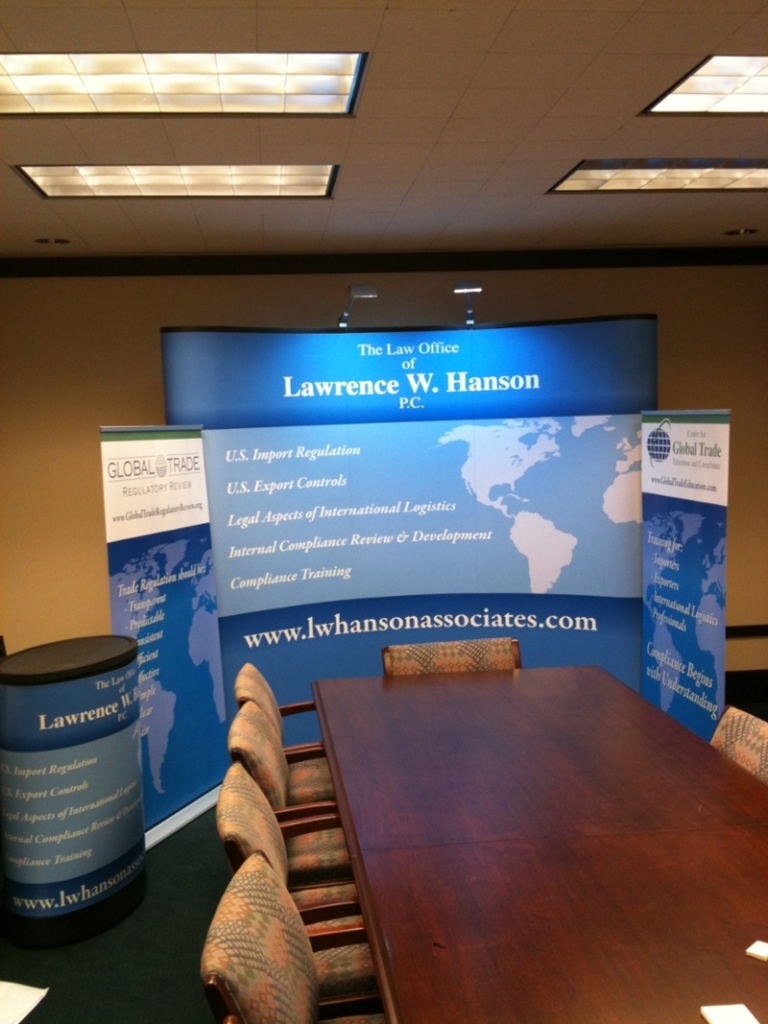 The second part of early planning is about the design. Making your trade show exhibit stand out is important in creating a memorable experience for attendees. After all, you want conference goers to remember your business. Reserving a prime space at the event is one step in the design process. Consider things such as the likely flow of participants walking the show floor. Are there main attractions that would make sense for your organization to be positioned near? If your competitors are also exhibiting, have they already secured their space and where are they? Similarly, if a strategic partner of yours will be exhibiting, there may be an opportunity to strategically position your space next to theirs.
The second part of early planning is about the design. Making your trade show exhibit stand out is important in creating a memorable experience for attendees. After all, you want conference goers to remember your business. Reserving a prime space at the event is one step in the design process. Consider things such as the likely flow of participants walking the show floor. Are there main attractions that would make sense for your organization to be positioned near? If your competitors are also exhibiting, have they already secured their space and where are they? Similarly, if a strategic partner of yours will be exhibiting, there may be an opportunity to strategically position your space next to theirs.
Also, what are the available booth sizes and what is your total budget for this event? Common booth sizes are 10 feet x 10 feet and 20 feet by 20 feet. The size of your booth space is often determined by your budget since a larger space will cost more. Another consideration is whether having a corner space would bring you better traffic and, if you already have a trade show booth, will it accommodate an open side and open front. Some conferences also offer island spaces, which means all four sides of the booth are open. Careful consideration needs to take place in set ups like this as there is no true front of an island booth. Guests can approach your booth from all four sides with an island booth space, so your booth design should be planned accordingly. Registering early so you can secure the ideal space for your organization is key since the spaces are often reserved on a first come, first served basis.
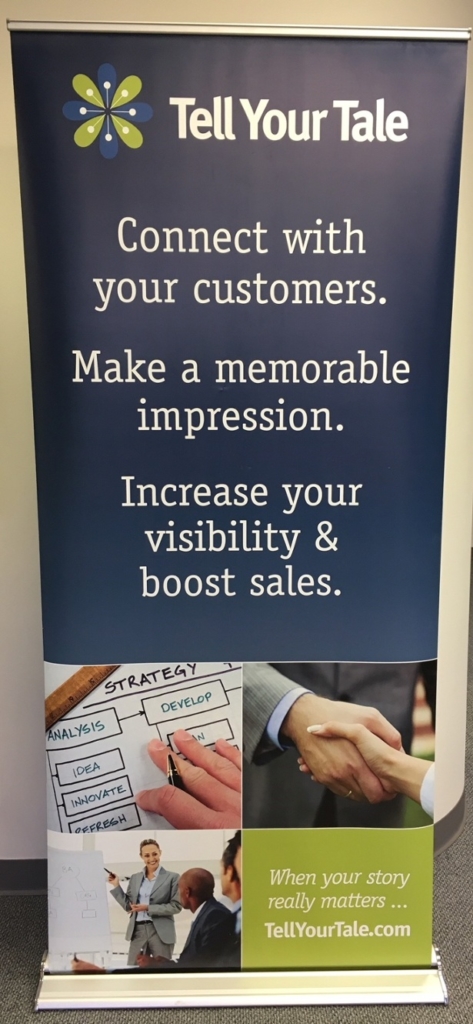 With your booth space secured, your next step is to determine if you’ll be using a booth property that your organization already owns or if you need to rent or buy a trade show booth. There are numerous options when it comes to booth structures—from a traditional booth with graphics that can be attached with VELCRO® to a 84″ tall x 36″ wide pull-up banner that can be used on its own or beside another as a backdrop. We’ve even created three dimensional cubes with key messages and images that serve as both a backdrop, a seat and a conversation prop. (See two examples below.)
With your booth space secured, your next step is to determine if you’ll be using a booth property that your organization already owns or if you need to rent or buy a trade show booth. There are numerous options when it comes to booth structures—from a traditional booth with graphics that can be attached with VELCRO® to a 84″ tall x 36″ wide pull-up banner that can be used on its own or beside another as a backdrop. We’ve even created three dimensional cubes with key messages and images that serve as both a backdrop, a seat and a conversation prop. (See two examples below.)
When designing your booth, you not only need to consider the imagery and messaging printed on the booth graphics but also plan how the space will be set up. For instance, a table is often provided with a purchased booth reservation and most organizations place the table at the front of the booth space to hold marketing collateral. However, this table placement creates a barrier between your organization and conference attendees walking by your booth. Instead, consider placing your table as a side to your space so that people walking by are better able to enter your space and engage in conversation. (See example of table placement below.) Then, if they’re interested in collecting some of your marketing material, that is just a step away.
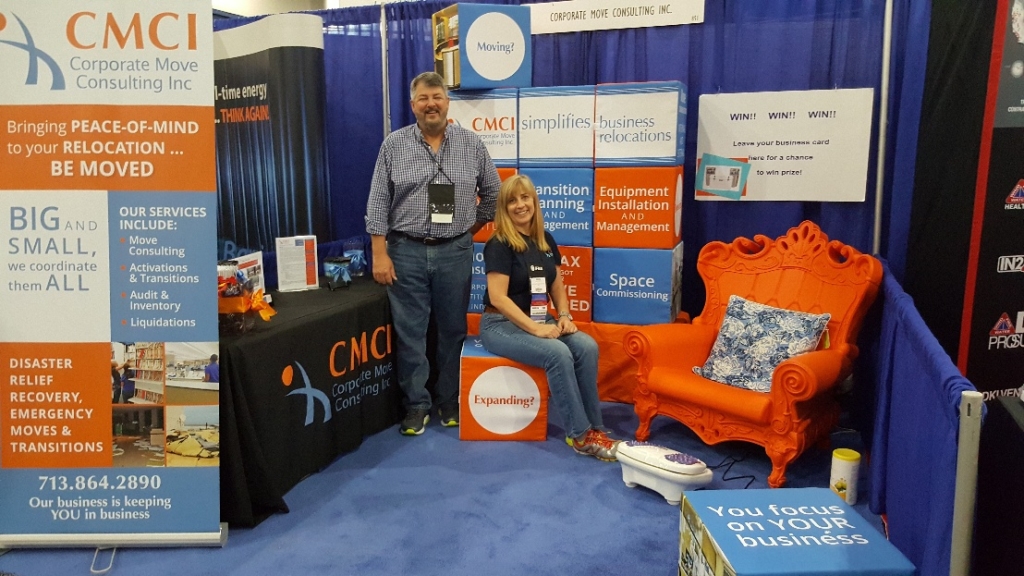 Whether you need to create updated graphics for a traditional trade show booth or are starting from scratch on unique trade show graphics, start the design six weeks in advance of the show to allow for the actual design work, reviews and edits, production and shipping either to your business or directly to the event venue. (Review the event materials from the organizer to determine move-in and move-out specifics, including whether you are allowed to bring in your booth property or if you are required to work with a union representative and the associated costs.) Partner with a trusted graphic designer to create professional graphics that resonate with your target buyer. Remember: you only have once to make the right impression and there will be a lot of competition for conference attendees’ attention. A good graphic designer will also collaborate with the printer or production company to provide the art files in the format that works best for the final production.
Whether you need to create updated graphics for a traditional trade show booth or are starting from scratch on unique trade show graphics, start the design six weeks in advance of the show to allow for the actual design work, reviews and edits, production and shipping either to your business or directly to the event venue. (Review the event materials from the organizer to determine move-in and move-out specifics, including whether you are allowed to bring in your booth property or if you are required to work with a union representative and the associated costs.) Partner with a trusted graphic designer to create professional graphics that resonate with your target buyer. Remember: you only have once to make the right impression and there will be a lot of competition for conference attendees’ attention. A good graphic designer will also collaborate with the printer or production company to provide the art files in the format that works best for the final production.
When ordering your trade show graphics, keep in mind how you will store and ship these materials. You may incur additional fees for a storage crate or carrying case but that’s likely worth the investment to protect the trade show materials. Consider the weight and size of the materials.
The Show Stage:
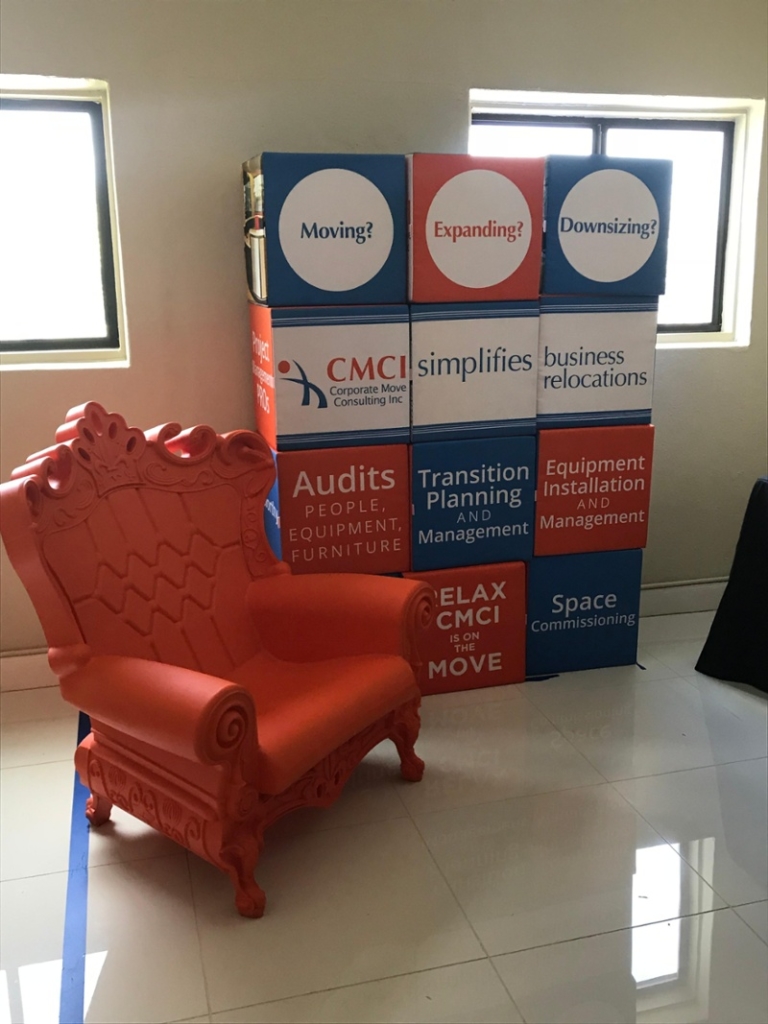 Whether your main goal at the trade show is to sell your product/service or is to maintain visibility with your target market, capturing the attention of attendees and is imperative to your success. Ideally, the design of your booth graphics helps draw your target buyer into your booth space but there’s much more to consider before you arrive. We recommend meeting with your team members in advance of the event to discuss the strategic purpose of exhibiting at this trade show and their roles at the event. We also suggest your team meet at your booth once it’s set up but before the actual event begins to review the materials available, any promotions that you’re running and key messages. Your winning tool is bringing your best sales people who can have one-on-one conversations with attendees. They need to be personable and able to transition conversations into demonstrations of your product/service. The goal is to capture contact details of likely buyers with any notes on how tailored follow-up should occur.
Whether your main goal at the trade show is to sell your product/service or is to maintain visibility with your target market, capturing the attention of attendees and is imperative to your success. Ideally, the design of your booth graphics helps draw your target buyer into your booth space but there’s much more to consider before you arrive. We recommend meeting with your team members in advance of the event to discuss the strategic purpose of exhibiting at this trade show and their roles at the event. We also suggest your team meet at your booth once it’s set up but before the actual event begins to review the materials available, any promotions that you’re running and key messages. Your winning tool is bringing your best sales people who can have one-on-one conversations with attendees. They need to be personable and able to transition conversations into demonstrations of your product/service. The goal is to capture contact details of likely buyers with any notes on how tailored follow-up should occur.
Next, be sure to have multiple lead captures. It can be as simple as a drawing for prospects to win a prize by dropping their business cards in a fish bowl. You may have an iPad with a form to fill out to capture lead information but make sure that you have paid in advance for an Internet connection since that’s often an additional charge. Always have multiple ways to retrieve prospect information.
The Post-Show Stage:
Even before you attend the event, you should have a strategy in place to follow-up with prospects after the show. It is very important to get in front of them quickly. Sort leads by those needing urgent follow-up (hot leads) and those that need more nurturing. A simple follow-up phone call or email thanking them for attending and giving them a little more information about your services and offerings goes a long way. A campaign that ushers leads through the buyer’s journey and shares helpful content allows your business to respond quickly to those most likely to buy quickly, while cultivating relationships with those who may purchase down the road. The right preparation, execution and follow-up allows your organization to build and nurture these relationships now and in the future.
article written by Megan F. Salch & Halie Dittemore


